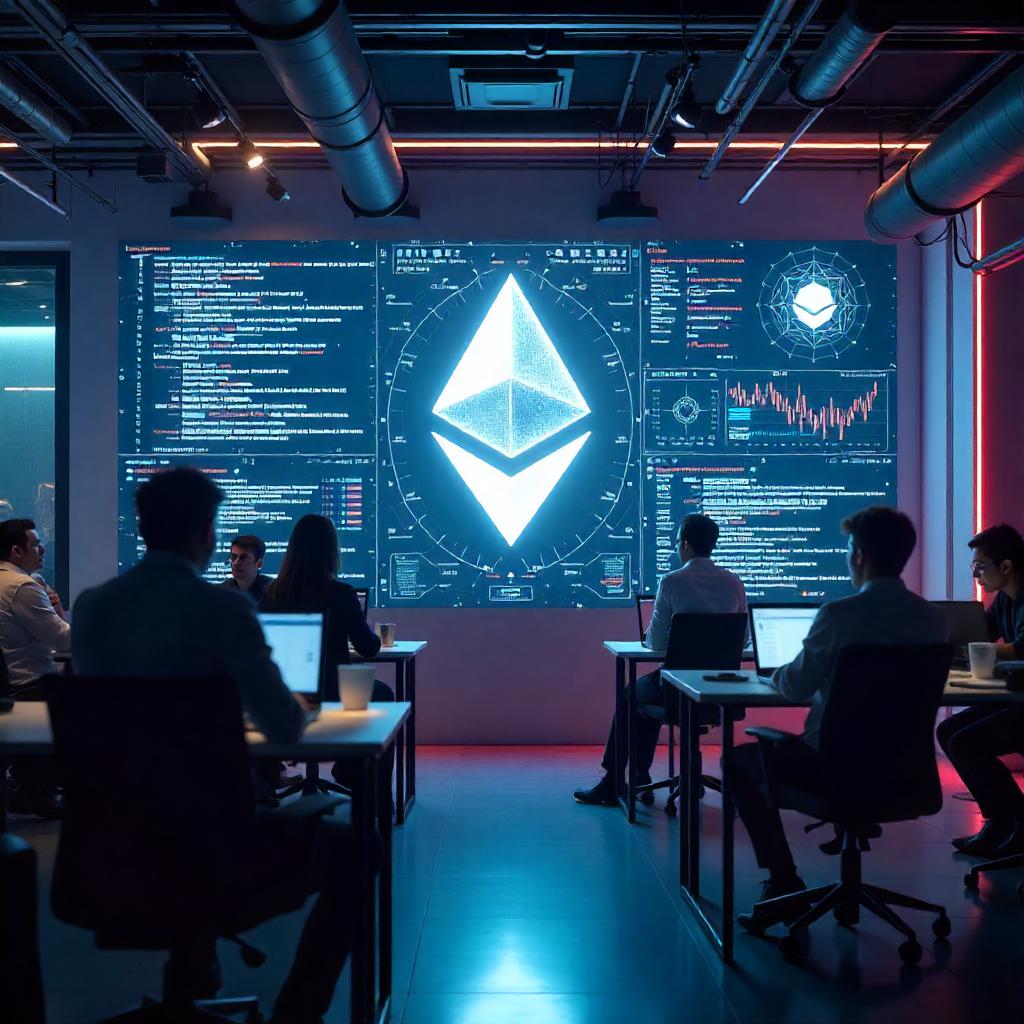In the ever-evolving world of cryptocurrency and blockchain gaming, Floki Inu has made a significant leap forward with the introduction of FlokiTars NFTs. These digital assets are not merely collectibles; they serve as essential keys to accessing the Valhalla metaverse—a play-to-earn (P2E) game that blends traditional gaming elements with blockchain technology. This strategic move has sparked a wide array of reactions within the crypto community, ranging from enthusiastic support to critical scrutiny.
FlokiTars, launched in 2021, are a collection of over 10,000 Viking-themed NFTs. Initially, they were sold out in just 31 minutes, raising $1.4 million for the Million Gardens Movement, a philanthropic initiative led by Kimbal Musk. Fast forward to 2025, and these NFTs have found a new purpose within the Floki ecosystem. As of June 2025, Floki Inu announced that owning a FlokiTar is now a prerequisite for full access to Valhalla, Floki’s flagship metaverse game.
This integration of NFTs into gameplay is not just a trend but a deliberate strategy to enhance user engagement and add tangible value to digital assets. However, this move has not been without controversy. While some hail it as an innovative approach to merging NFTs with gaming, others express concerns about accessibility and the potential for creating a “pay-to-win” environment.
In this article, we will delve into the mechanics of FlokiTars within Valhalla, explore the community’s diverse reactions, and examine the broader implications of this development for the future of NFT gaming. Through this exploration, we aim to provide a comprehensive understanding of how Floki Inu’s latest initiative is shaping the intersection of blockchain technology and interactive entertainment.
Understanding FlokiTars and Their Role in Valhalla
FlokiTars are not just digital collectibles; they are pivotal components of the Floki Inu ecosystem, especially within the Valhalla metaverse. These NFTs serve as access keys to the game’s core features, marking a significant departure from traditional NFT roles.
Launched in 2021, FlokiTars are a collection of over 10,000 Viking-themed generative avatars. Initially, they were sold out in just 31 minutes, raising $1.4 million for the Million Gardens Movement, a philanthropic initiative led by Kimbal Musk. This rapid sell-out underscored the community’s enthusiasm and the project’s potential.
In June 2025, Floki Inu announced that owning a FlokiTar would be a prerequisite for full access to Valhalla. This move transformed FlokiTars from mere collectibles into essential game assets. Players without a FlokiTar are restricted from accessing core gameplay elements, including play-to-earn mechanics, battles, and leveling features. This integration ensures that FlokiTars are not only valuable in the marketplace but also integral to the gaming experience.
The role of FlokiTars extends beyond access; they are embedded with utility within the game’s ecosystem. Players can utilize these NFTs to unlock exclusive in-game features and rare Viking-themed items. For instance, burning a FlokiTar can grant access to unique visual effects or special wearables like the Helmitar. However, this process is irreversible—the NFT is permanently removed from circulation, introducing a deflationary aspect to the FlokiTar supply. This mechanism not only enhances the game’s economy but also adds a layer of strategy for players deciding when and how to utilize their NFTs.
Moreover, the integration of FlokiTars into Valhalla exemplifies the evolving role of NFTs in gaming. Traditionally, NFTs served as static assets or collectibles. In contrast, FlokiTars are dynamic, offering players tangible benefits and influencing their gameplay experience. This approach aligns with the broader trend of incorporating NFTs into functional roles within digital ecosystems, thereby increasing their value and utility.
In summary, FlokiTars have transitioned from being mere digital collectibles to becoming essential assets within the Valhalla metaverse. Their integration enhances gameplay, adds economic value, and sets a precedent for the future use of NFTs in gaming. As the Valhalla mainnet launch approaches, the significance of FlokiTars is poised to grow, offering players new opportunities and experiences in the evolving digital landscape.
The ‘Burn-to-Unlock’ Mechanism: A Strategic Integration of NFTs in Valhalla
Floki Inu’s innovative approach to integrating NFTs into its Valhalla metaverse introduces a dynamic ‘burn-to-unlock’ mechanism, setting a precedent in the gaming industry. This strategy not only enhances the utility of FlokiTars NFTs but also introduces a layer of economic strategy and player engagement within the game.
Mechanics of the Burn-to-Unlock Feature
In Valhalla, FlokiTars NFTs serve as more than just digital collectibles; they are essential tools for unlocking exclusive in-game features and rare Viking-themed items. Players can choose to ‘burn’ their FlokiTars, a process that permanently removes the NFT from circulation, in exchange for unique rewards. This irreversible action introduces a strategic element, as players must weigh the benefits of immediate rewards against the long-term value of holding onto their NFTs.
Economic Implications and Community Impact
The burn-to-unlock mechanism has significant economic implications within the Valhalla ecosystem. By reducing the number of FlokiTars in circulation, the scarcity of these NFTs increases, potentially enhancing their value over time. This deflationary aspect encourages players to consider the long-term benefits of holding their NFTs, fostering a more engaged and strategic community.
Broader Industry Implications
Floki Inu’s integration of the burn-to-unlock feature exemplifies the evolving role of NFTs in gaming. By providing tangible utility and strategic value to NFTs, Floki Inu sets a benchmark for other projects in the industry. This approach not only enhances the gaming experience but also demonstrates the potential of NFTs to serve functional roles within digital ecosystems.
The burn-to-unlock mechanism in Valhalla represents a forward-thinking integration of NFTs into gaming, offering players meaningful choices and enhancing the overall game economy. As the gaming industry continues to explore the potential of blockchain technology, Floki Inu’s approach provides valuable insights into creating engaging and economically sound gaming experiences.
Community Reactions and Debates
Floki Inu’s decision to integrate FlokiTars NFTs into the Valhalla metaverse has elicited a spectrum of reactions from the community, ranging from enthusiastic support to critical scrutiny. This section delves into the diverse perspectives surrounding this development, examining both the positive feedback and the concerns raised by players and stakeholders.
Supportive Perspectives
Proponents of the FlokiTar integration highlight several advantages that align with the evolving landscape of blockchain gaming:
Enhanced Player Engagement: By introducing tangible utility to NFTs, Floki Inu encourages players to actively participate in the game. The opportunity to unlock exclusive in-game features and rewards through the burn-to-unlock mechanism adds depth to the gameplay experience, fostering a more immersive and engaging environment.
Increased Value of NFTs: The burn-to-unlock feature introduces a deflationary aspect to the FlokiTar supply. As players choose to burn their NFTs to access premium content, the overall circulating supply decreases, potentially increasing the scarcity and value of remaining FlokiTars. This scarcity can drive demand among collectors and investors, adding an economic incentive to the gameplay.
Innovative Use of NFTs: Traditionally, NFTs have served as digital collectibles or status symbols within gaming ecosystems. Floki Inu’s approach transforms FlokiTars into functional assets that influence gameplay, setting a precedent for future NFT integrations in the gaming industry. This innovation demonstrates how NFTs can evolve from mere collectibles to integral components of game mechanics.
Critical Viewpoints
Despite the positive aspects, some community members and industry observers have expressed reservations about the FlokiTar integration:
Accessibility Concerns: The requirement to own a FlokiTar to access full gameplay features may create barriers for new players or those unwilling to invest in NFTs. This could lead to a fragmented player base, where only those who can afford NFTs enjoy the complete gaming experience, potentially alienating a portion of the community.
Economic Implications: While the burn-to-unlock mechanism introduces scarcity, it also raises questions about the long-term sustainability of the NFT economy within Valhalla. If too many NFTs are burned, it could limit the availability of assets for future players, potentially disrupting the in-game economy and affecting gameplay balance.
Market Speculation: The integration of NFTs with gameplay features may attract speculative behavior, where players purchase FlokiTars not for their utility but for potential resale value. This speculation could lead to price volatility and market manipulation, undermining the intended utility of the NFTs.
The integration of FlokiTars into the Valhalla metaverse represents a bold step in the evolution of blockchain gaming, offering innovative ways to enhance player engagement and add value to NFTs. However, it also introduces challenges related to accessibility, economic balance, and market dynamics. As the Valhalla mainnet launch approaches, it will be crucial for Floki Inu to address these concerns and ensure that the integration of FlokiTars enriches the gaming experience without creating unintended barriers or economic disparities. The ongoing dialogue within the community will play a vital role in shaping the future of this integration and its impact on the broader gaming and NFT landscapes.
Impact on the Floki Ecosystem
FlokiTars have evolved from being mere collectibles to pivotal assets within the Floki ecosystem, significantly influencing its economic and community dynamics.
Increased Demand and Market Activity
The integration of FlokiTars into the Valhalla metaverse has led to a surge in demand for these NFTs. Players seeking full access to Valhalla’s core features are now actively acquiring FlokiTars, driving up their market value. This heightened demand has resulted in increased trading volumes and a more active secondary market for FlokiTars. As players burn their NFTs to unlock exclusive in-game rewards, the circulating supply decreases, potentially enhancing the value of remaining FlokiTars due to their increased scarcity.
Enhanced Utility of $FLOKI Token
Within Valhalla, the $FLOKI token serves as the primary in-game currency, facilitating transactions for various assets and services. The requirement to own a FlokiTar to access full gameplay features has led to increased demand for $FLOKI, as players need to acquire it to participate in the game. This integration not only boosts the utility of the $FLOKI token but also encourages its circulation within the ecosystem, reinforcing its role as a central component of the Floki economy.
Community Engagement and Growth
The strategic use of FlokiTars within Valhalla has fostered a more engaged and invested community. Players are now incentivized to participate actively in the ecosystem, whether by acquiring, holding, or utilizing FlokiTars. This active participation has led to increased community discussions, collaborations, and a stronger sense of belonging among Floki enthusiasts. The community’s involvement is further amplified by Floki Inu’s marketing efforts, including partnerships and sponsorships, which have expanded the project’s reach and visibility.
Economic Implications and Sustainability
The burn-to-unlock mechanism associated with FlokiTars introduces a deflationary aspect to their supply, potentially increasing their value over time. However, this also raises questions about the long-term sustainability of the NFT economy within Valhalla. If too many FlokiTars are burned, it could limit the availability of assets for future players, potentially disrupting the in-game economy and affecting gameplay balance.
FlokiTars have become integral to the Floki ecosystem, influencing its economic dynamics and fostering a more engaged community. Their integration into Valhalla exemplifies the evolving role of NFTs in gaming, offering both challenges and opportunities for the project’s growth and sustainability. As the Floki ecosystem continues to develop, the impact of FlokiTars will likely play a crucial role in shaping its future trajectory.
Broader Implications for NFT Gaming
Floki Inu’s integration of FlokiTars as essential assets within the Valhalla metaverse offers a compelling glimpse into the future of NFT gaming. This strategic move not only enhances the gaming experience but also sets a precedent for the broader gaming industry.
Innovative Use of NFTs in Gaming
Traditionally, NFTs have served as digital collectibles or status symbols within gaming ecosystems. Floki Inu’s approach transforms FlokiTars into functional assets that influence gameplay, offering players tangible benefits and enhancing their overall experience. This innovative use of NFTs highlights how blockchain technology can be leveraged to create more immersive and rewarding gaming environments.
Influence on Industry Standards
By embedding NFTs into the core mechanics of Valhalla, Floki Inu challenges conventional gaming paradigms and encourages other developers to explore similar integrations. This shift towards functional NFTs could pave the way for more dynamic and player-centric gaming ecosystems, where digital assets play an integral role in shaping gameplay and player progression.
Potential for Cross-Platform Integration
The success of FlokiTars in Valhalla may inspire other projects to consider cross-platform integrations, allowing NFTs to retain their utility across different games and virtual environments. Such interoperability could enhance the value and appeal of NFTs, fostering a more interconnected and expansive digital gaming landscape.
Floki Inu’s innovative use of FlokiTars within the Valhalla metaverse exemplifies the evolving role of NFTs in gaming. By transforming digital collectibles into functional assets that enhance gameplay, Floki Inu not only enriches the player experience but also sets a new standard for the integration of blockchain technology in the gaming industry. As the gaming landscape continues to evolve, the lessons learned from Floki Inu’s approach could influence future developments and inspire new ways to incorporate NFTs into gaming ecosystems.
FlokiTars—Redefining NFT Utility in Gaming
Floki Inu’s integration of FlokiTars into the Valhalla metaverse marks a significant evolution in the role of NFTs within gaming ecosystems. By transforming these digital assets from mere collectibles into functional components that influence gameplay, Floki Inu sets a precedent for the broader gaming industry.
The innovative “burn-to-unlock” mechanism not only enhances the gaming experience by offering players exclusive rewards but also introduces a deflationary aspect to the FlokiTar supply, potentially increasing their value over time. This approach demonstrates how NFTs can serve as strategic assets that enhance player engagement and contribute to the economic dynamics of the game.
Moreover, Floki Inu’s efforts to bridge the digital and physical worlds, as evidenced by their sponsorship of the Baroda Premier League, showcase a commitment to expanding the reach and impact of their ecosystem beyond the confines of the virtual space. This holistic approach underscores the potential of blockchain technology to create interconnected experiences that resonate with diverse audiences.
As the Valhalla mainnet launch approaches, the integration of FlokiTars is poised to play a pivotal role in shaping the future of NFT gaming. By offering tangible utility and fostering a more engaged community, Floki Inu is not only enhancing the player experience but also setting a new standard for the integration of NFTs into gaming ecosystems. The success of this initiative could serve as a model for other projects seeking to leverage the unique capabilities of blockchain technology to create immersive and rewarding gaming experiences.





